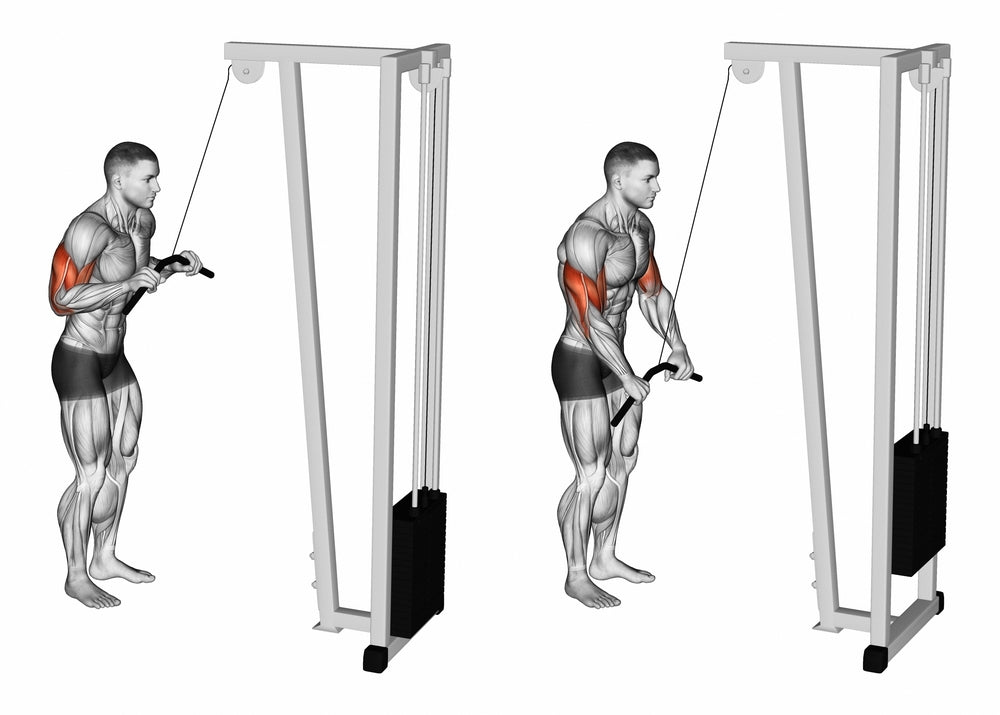Introduction:
Physiotherapy plays a pivotal role in the journey of rehabilitation, aiding individuals in recovering from injuries, surgeries, or chronic conditions. One of the increasingly popular tools in the physiotherapist’s arsenal is the CABL Cable Trainer, offering versatility and effectiveness in targeting specific muscle groups. In this blog, we will explore 10 key cable physiotherapy exercises that can significantly contribute to patients’ rehabilitation, providing a pathway to improved overall physical health.
Cable Rows for Posture Improvement:
Targeting the upper back muscles, this exercise enhances posture by strengthening the muscles responsible for maintaining an upright position. Pulling the handle towards the chest engages and tones the upper back, promoting better spinal alignment.
Lateral Pulldowns for Upper Back Strength:
Focusing on the latissimus dorsi and upper back muscles, this exercise helps build strength in the upper back, providing stability and reducing the risk of upper back pain. A wide grip handle ensures effective engagement of the targeted muscle groups.

Cable Chest Press for Pectoral Strength:
This exercise targets the upper back and pectoral muscles, aiding in rebuilding chest strength after surgeries or injuries. The forward push motion with cable resistance contributes to a balanced upper body musculature.
Cable Leg Press for Lower Body Stability:
Targeting the quadriceps, hamstrings, and glutes, the cable leg press enhances lower body stability. This exercise is crucial for activities like walking and climbing stairs, making it beneficial for overall lower body strength.
Cable Woodchops for Core Activation:
Engaging the core muscles, especially the obliques and rectus abdominis, cable woodchops enhance core stability. The diagonal pull across the body promotes better balance, preventing back pain and improving overall core strength.
Tricep Pushdowns for Arm Strength:
Focusing on the triceps, tricep pushdowns are essential for regaining strength in the arms, particularly after surgeries or prolonged periods of inactivity. The controlled extension of the elbows helps rebuild tricep muscle strength.

Face Pulls for Neck and Upper Back Mobility:
Targeting the trapezius and rear deltoids, face pulls contribute to improved neck and upper back mobility. This exercise reduces stiffness and discomfort, promoting flexibility in these crucial areas.
Cable Lunges for Lower Body Flexibility:
Enhancing flexibility in the quadriceps, hamstrings, and glutes, cable lunges contribute to lower body strength and flexibility. This exercise is particularly beneficial for activities that involve bending and kneeling.
Seated Cable Shoulder Press for Shoulder Stability:
Focusing on the deltoids and trapezius, seated cable shoulder press aids in rebuilding shoulder strength and stability. This exercise is vital for patients recovering from shoulder injuries or surgeries.
Cable External Rotations for Rotator Cuff Health:
Targeting the rotator cuff muscles, cable external rotations are crucial for maintaining rotator cuff health and preventing shoulder injuries. The controlled rotation of the forearm contributes to overall shoulder stability.
Conclusion:
Incorporating these 10 cable exercises into physiotherapy rehabilitation programs can significantly enhance the recovery journey for individuals facing various physical challenges. The versatility and targeted resistance provided by cable exercises, especially with the CABL Cable Trainer, make them valuable tools in promoting strength, stability, and overall well-being during the rehabilitation process. At Matteo Physio, we embrace these exercises as integral components of our approach to delivering the best physiotherapy care in Gurgaon, helping our patients regain strength and achieve optimal physical health.
